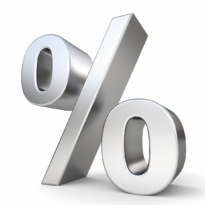Work and Pensions Secretary Therese Coffey has confirmed that the Government remains committed to the state pension triple lock for the rest of this Parliament. This comes after the Government temporarily moved to a ‘double lock’ of the higher of price inflation or 2.5%, excluding earnings inflation from the April 2022 increase, because of pandemic related distortions in national average earnings.
With inflation expected to continue to rise, the Spring Statement is the chance for the Chancellor to offer a higher increase this year in return for scaled back increase next year, suggests Steven Cameron, Pensions Director at Aegon.
Renewed commitment from the Government to the state pension triple lock will offer some reassurance to state pensioners. Many were left severely disappointed when the government broke their manifesto commitment and temporarily replaced the state pension triple lock with a less generous ‘double lock’, meaning the state pension will rise by 3.1% this April, far below the current inflation rate which was sitting at 5.5% last month, with an updated figure due on 23rd March. This is already at its highest level for 30 years and widely expected to rise further. This is sending a chill through pensioners, many of whom are already struggling with rising prices and facing rocketing energy bills.
The latest commitment is to be welcomed, meaning the increase in April 2023 and later years of this Parliament will be the highest of earnings growth, inflation or 2.5%. Anything less would have been met with pensioner outrage. But it still means many pensioners face a difficult squeeze on their cost of living for the next 12 months.
Looking ahead, there’s a good chance that state pensioners will be in for a bumper increase in April 2023. The Bank of England’s latest prediction is that inflation might reach 8% in the Spring and could be even higher later in the year.
The April 2023 increase will include inflation till September 2022, which could then be near its peak of 8% or above.
The triple lock will pay this, or even more if earnings growth is higher again. Without any government tinkering, this could put state pensioners on target for a bumper 8% plus increase in 2023, potentially the highest increase ever, compensating for the relatively low increase this April.
However, a year’s a long time to wait to ‘catch up’ and unfortunately, some of our elderly might not live to see the increase.
The Spring Statement presents one last chance for the Chancellor to offer further temporarily support for state pensioners. One approach would be to offer a higher state pension increase this April in return for a lower rise next April. For example, he could raise this year’s increase by 2.5% to 5.6%, but then pay 2.5% less than whatever the triple lock rise would have been next April. If as is being predicted price inflation were 8% next September, and if this were above earnings, state pensioners would still receive 5.5% next April.
While this would come at a cost to the Chancellor for the coming tax year, it would be financially neutral in later years as the state pension from April 2023 would be the same as it would have been. But in the meantime, state pensioners would have benefitted from an extra 2.5% or around £4.50 a week for someone on the full state pension.
The Chancellor has a hugely difficult task of offering support in the current cost of living crisis and pensioners are one group who need particular attention.
Note: Under the triple lock, the state pension rises annually at the highest of earnings inflation (total pay for three months to July), price inflation (September CPI figure) or 2.5% a year.



































